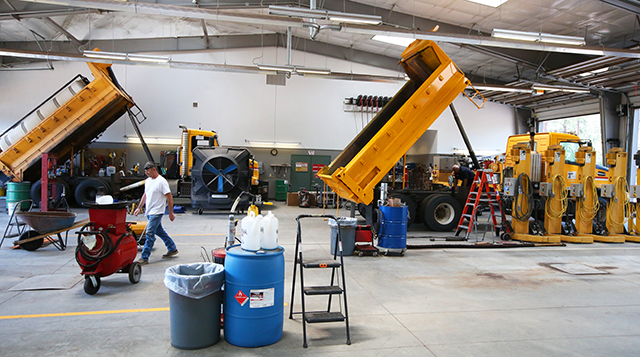A low-maintenance garden sounds good this time of year
Published 12:00 am Tuesday, July 24, 2018
Portland garden writer Dulcy Mahar once wrote, “The older I get, the more the idea of low-maintenance seems to appeal as a year-round approach to gardening, not just for August.”
Many gardeners at this time of year are saying, “Amen to that, sister.”
Trending
A friend whose landscape always appeared to me to be low-maintenance is redesigning the landscape with the help of a professional to create an official low-maintenance landscape.
It is a difficult mental process of evaluation and assessment to start with, let alone the emotional aspect of removing old favorites. You need to look at the long-established perennials and think about their culture and growth habit.
Do they flop over at the slightest provocation? How can they be staked to look natural and not stiff? Do they need dead-heading in mid-season to encourage fuller growth and a second bloom? Can the plant be sheared instead of deadheaded? Has the clump of iris or daylilies outgrown its space and does it need to be divided? Does the plant reseed profusely?
At some point you stop asking yourself questions and start being truthful with yourself.
Do I really love that plant enough to put all the energy into its cultivation to keep it looking its best? A follow-up question would be, do I have the time and the energy to keep up with the maintenance of all the plants?
Once upon a time, I had visions of recreating a perennial border planting in the style of British garden designer and painter Gertrude Jekyll.
Trending
Then I read “Gertrude Jekyll’s Color Scheme for the Flower Garden” and realized it would take two full-time gardeners and a wheelbarrow full of money to create something that wasn’t at all appropriate for my 2 acres of juniper trees and lava rock.
The book has wonderful watercolor sketches, so all is not lost — it keeps me grounded in my own reality.
My friend is graciously sharing many perennials with friends, and historically isn’t that what gardening is all about?
We have all heard family stories of plant cuttings or divisions being shared down through the years. Maybe we don’t live in such a disposable society after all.
Who knows where some of my friend’s plants will end up?
The concentration for the new landscape will be focused on planting conifers intermingled with existing spring flowering shrubs and a limited amount of perennials. Compost will be used as mulch rather than wood chips. Pine needles are a massive problem in the area and will be easier to rake out of compost rather than the wood chips.
Dulcy Mahar maintained that the greatest step you can take in developing a low-maintenance landscape is to give up on the perfect lush lawn.
That is also the philosophy my friend is adapting. Cutting back on the fertilizer and determining how much irrigation is needed for general maintenance will greatly contribute to the low-maintenance landscape goal.
“Gardening for a Lifetime, How to Garden Wiser as you Grow Older,” by Sydney Eddison is a book I have written about in the past. If you are thinking about redoing areas of your landscape, the book will help you think through the process.
It is amazing to me how aggressive some plant material is and how quickly it can become out of control in the absence of fertilizer and overwatering. One mistake made over 30 years ago was a small planting of vinca minor in a small pocket of soil in the rockery. Over the years, the roots have grown deep between the cracks and crevices. Pretty as the blue flowers are in the early spring, the easily rooted vines are a pain to control. My goal is to continue working to get rid of it.
Lavender, providing you purchase the correct variety for our climate, is a prolific grower in Central Oregon and abundantly reseeded in the rockery, covering a rock walkway and giving the appearance of sheer neglect on the part of the gardener. The plant will be better served as part of a hillside planting so it will be transplanted.
I always reserve a small area of the three-tiered rockery for annuals.
Truth be known it is the buffet for the deer. I did follow a hint from last year’s garden tour to use Replex at planting time of the annuals. It has worked so far. However, I forgot to add some to the existing hosta bed, and three guesses as to what happened. Oh well, the two young deer are beautiful to watch as their bodies develop.
Several years ago, I found deer velvet on a shrub and shared it with a third-grade grandson in Minneapolis, who in turn shared it with his class.
Isn’t that why we live here — to observe and enjoy nature?
Where else would I have found deer velvet on a shrub, a hummingbird nest that had fallen out of a juniper tree and a bird’s egg on the concrete floor in the greenhouse?
— Reporter: douville@bendbroadband.com








